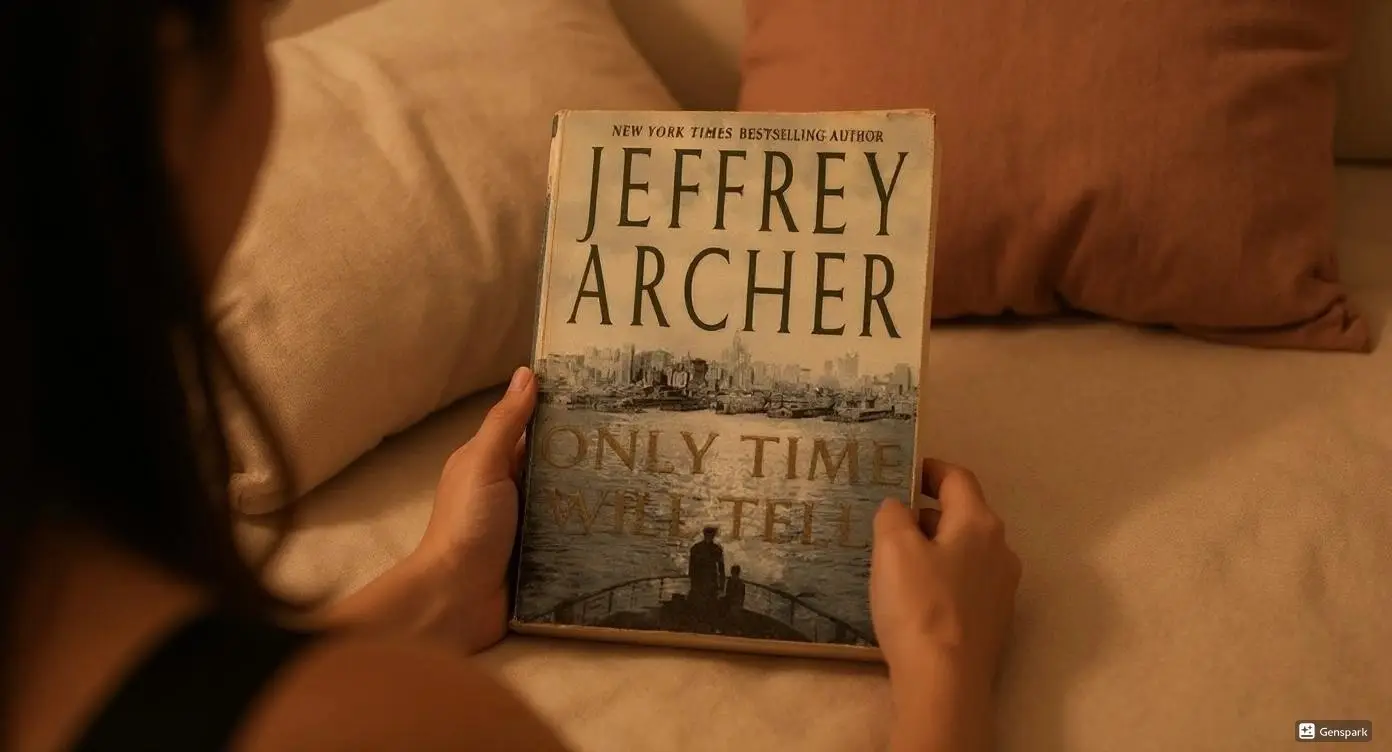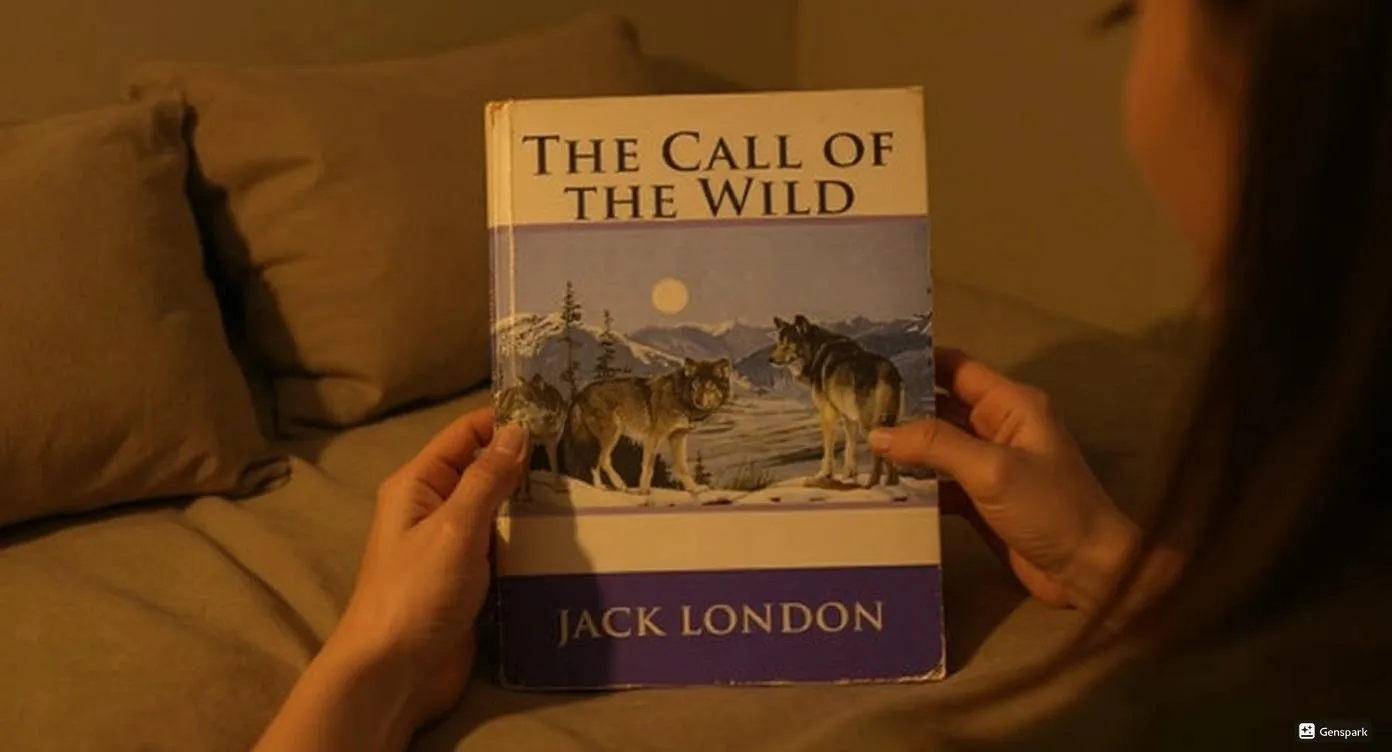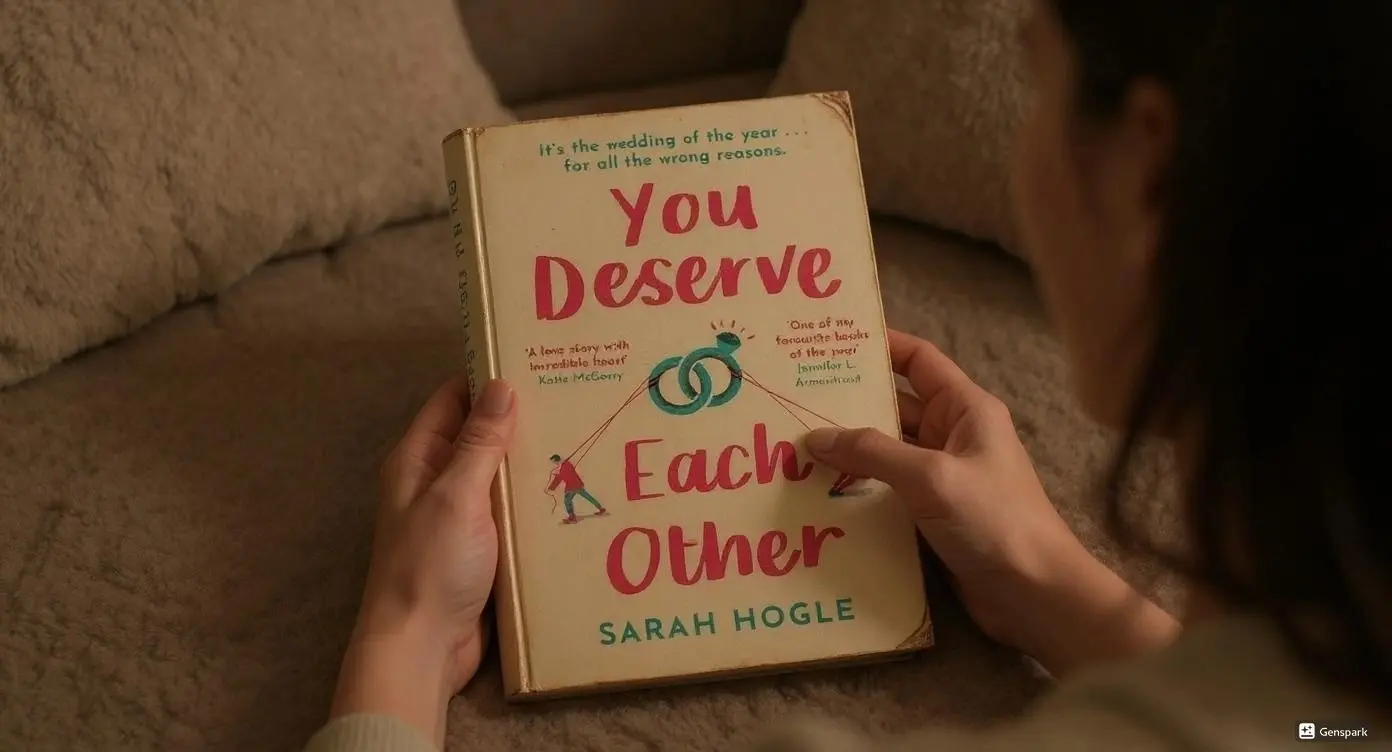I grabbed Rock Paper Scissors at 11:30 PM on a rainy Tuesday, right after my marriage counselor session. The opening line “My husband doesn’t recognize my face” hit me like a punch to the stomach. I sat in my car outside the therapist’s office, rain drumming on the windshield, and read the first chapter instead of driving home. I knew this book would wreck me.
As someone who’s dissected over 400 psychological thrillers for Dionysus Reviews, I thought I was immune to shock. I was wrong. Alice Feeney’s twisted anniversary tale about Adam Wright, a screenwriter with face blindness, and his wife Amelia completely destroyed my assumptions about marriage and trust. I finished it at 4:17 AM, heart pounding, questioning everything I thought I knew about intimate relationships.
The premise sounds simple: a couple takes an anniversary trip to repair their marriage. But Feeney weaponizes Adam’s prosopagnosia to create the most unsettling domestic thriller I’ve read since Gone Girl. When your husband literally cannot recognize your face, how do you build trust? How do you know who you’re really sleeping next to? These questions haunted me for weeks.
I’ve spent twenty years reviewing books, and I can count on one hand the stories that left me physically shaken. This is one of them.
Key Takeaways
Face blindness becomes a devastating metaphor for emotional blindness in marriage. I kept thinking about how many people I “see” daily without truly recognizing who they are beneath the surface.
Anniversary letters function as emotional landmines throughout the narrative. Each yearly letter completely reframes what you think you understand about their relationship, creating a reading experience that demands constant reevaluation.
The Scottish Highlands chapel transforms from romantic getaway to psychological prison. The isolation mirrors the characters’ emotional entrapment, creating claustrophobic tension that made me check my own doors were locked.
Unreliable narrators reach new levels of manipulation. Feeney doesn’t just withhold information – she uses each character’s perspective to systematically dismantle reader assumptions about truth and identity.
The children’s game “rock, paper, scissors” becomes a chilling metaphor for power dynamics. Someone always wins, someone always loses, and the rules can change without warning.
Basic Book Details
Publishing Information: August 19, 2021 by Flatiron Books
Genre: Psychological Thriller, Domestic Suspense
Plot: A married couple with trust issues takes a weekend trip to a remote Scottish chapel, where their anniversary celebration becomes a deadly game of survival and deception involving face blindness and hidden identities.
Series Information: Standalone novel
Page Count: 320 pages
Main Characters:
- Adam Wright: Successful screenwriter with prosopagnosia who cannot recognize faces, including his wife’s
- Amelia Wright: Adam’s wife who works at Battersea Dogs Home and harbors dangerous secrets about their decade-long marriage
- Robin: Mysterious third narrator whose identity remains hidden until the explosive finale
Plot Architecture And Narrative Construction
Multi-Perspective Storytelling Through Unreliable Narrators
I spent hours mapping Feeney’s narrative structure on sticky notes. She creates three distinct voices that systematically lie to readers through omission and misdirection. Adam’s prosopagnosia makes him unreliable about identity. Amelia’s calculated nature makes her unreliable about motive. Robin’s mysterious perspective completely destabilizes any narrative security.
The genius lies in timing. Feeney shifts perspective at moments of peak tension, yanking readers away from resolution just when you need answers most. I found myself flipping back pages, desperate to understand what I’d missed.
Each narrator withholds different pieces of the puzzle. I felt like I was assembling a jigsaw with pieces from three different boxes, never sure which image I was creating until the final reveal.
Anniversary Letters As Structural Framework And Emotional Timeline
The anniversary letters serve as breadcrumbs leading to devastating truth. With each year examined, Feeney peels back relationship layers like a psychological autopsy. I went back to reread Year One after finishing, discovering new meanings hidden in plain sight.
These letters function as temporal anchors in a deliberately confusing chronology. They provide structure but simultaneously undermine everything you think you know. Year Ten’s letter made me physically nauseous when I understood its true implications.
Feeney plants seeds in early letters that don’t bloom until the finale. I marked seventeen different moments that gained new meaning after the climax.
Character Psychology And Development Dynamics
Adam Wright’s Prosopagnosia As Relationship Metaphor And Plot Device
Adam’s face blindness creates constant anxiety about identity and belonging. I watched him navigate social situations through exhausting mental gymnastics, relying on voice patterns, clothing, and behavioral cues. This neurological condition becomes the story’s beating heart.
The condition forces Adam to recognize people through deeper characteristics than visual appearance. Ironically, this makes him more vulnerable to deception but also more attuned to subtle emotional changes. I found this paradox brilliantly unsettling.
Feeney uses prosopagnosia to explore themes about recognition and intimacy. When Adam can’t visually identify his wife, their entire relationship becomes based on trust and emotional connection rather than physical familiarity.
Amelia Wright’s Calculated Desperation And Hidden Agency
I initially sympathized with Amelia’s frustration at being married to someone who can’t recognize her face. But Feeney gradually reveals how Amelia weaponizes Adam’s condition for her own purposes. Her transformation from victim to manipulator happens so subtly I didn’t notice until it was too late.
Amelia’s actions stem from genuine emotional wounds, but her methods cross into psychological abuse territory. She uses Adam’s disability as camouflage for increasingly disturbing behavior. This moral ambiguity made me deeply uncomfortable.
The brilliance of Amelia’s character lies in how she simultaneously evokes sympathy and revulsion. I understood her motivations but couldn’t forgive her actions.
Atmospheric Setting And Gothic Elements
Scottish Highlands Chapel As Isolated Psychological Prison
The repurposed chapel setting is absolutely perfect. Former sanctuary becomes confessional booth for dark secrets. I could feel the weight of religious history pressing down on these characters as they revealed their worst selves.
Physical isolation mirrors emotional isolation between characters. The chapel’s stone walls trap secrets and lies, creating a pressure cooker atmosphere where confrontation becomes inevitable. I felt claustrophobic reading their interactions.
The building’s transformation from sacred space to romantic getaway to psychological battleground reflects the characters’ own moral deterioration. What starts as seeking redemption becomes revelation of damnation.
Weather And Environment As Extensions Of Marital Discord
The relentless snowstorm traps characters together while creating claustrophobic intimacy. I noticed how Feeney uses weather descriptions to reflect internal states. The colder it gets outside, the more heated their psychological warfare becomes.
The nearby graveyard serves as constant mortality reminder. Every glimpse of headstones through windows reinforces themes about consequences and what eventually surfaces from burial.
Environmental pressure forces intimacy none of these characters can handle. They can’t escape each other or their past, making devastating revelations inevitable.
Literary Techniques And Writing Craft
Pacing Mechanisms And Chapter Structure For Maximum Tension
This novel starts slowly but accelerates into psychological free fall. Feeney builds tension through strategic information withholding and perfectly timed reveals. I noticed short, punchy chapters during high-tension moments and longer introspective sections during character development.
The chapter structure alternates between present-day events and anniversary letters, creating rhythm that prevents reader complacency. Just when present action reaches fever pitch, we’re pulled into past context that reframes everything.
I found myself reading faster as tension built, exactly what Feeney intended. Her pacing manipulation is masterful.
Symbolism Of Games, Rituals, And Traditional Anniversary Gifts
The titular rock, paper, scissors game becomes a chilling metaphor for relationship power dynamics. Each element beats one opponent but loses to another, just like marriage where victories are temporary and roles constantly shift.
Traditional anniversary gifts carry symbolic weight throughout the letters. First anniversary paper represents fragility, later years’ crystal suggests beauty and brittleness. Feeney layers meaning into every detail.
The couple’s rituals become prisons they can’t escape. What starts as comfort becomes compulsion, trapping them in patterns that enable destruction.
Pros
Feeney’s exploration of prosopagnosia is medically accurate and emotionally resonant. Face blindness affects approximately 2% of the population, and her portrayal avoids stereotypes while showing real impact on daily life and relationships.
The narrative structure is genuinely innovative. Multiple timelines and perspectives create active reading experience where you become detective piecing together clues rather than passive observer.
Character development is exceptional. Each character serves as both protagonist and antagonist depending on perspective. No one is purely good or evil – they’re flawed humans making terrible choices for understandable reasons.
The psychological tension builds organically without cheap shock tactics. Every reveal feels earned and inevitable in hindsight, marking superior thriller writing.
Scottish setting provides beautiful atmosphere without excessive description. Feeney paints vivid scenes with efficient prose that never slows pacing.
Cons
The slow start might frustrate readers expecting immediate thrills. First quarter focuses heavily on character establishment and relationship dynamics, which some thriller fans might find tedious.
Some plot elements strain credibility, particularly character motivations in the final act. Reveals are shocking but occasionally prioritize surprise over logical character development.
The ending rushes through consequences of climactic revelations. After building tension so carefully, resolution feels slightly abbreviated.
Certain anniversary letters feel more like exposition delivery than authentic correspondence. They serve plot structure but sometimes lack genuine personal letter voice.
Marketing as psychological thriller might mislead readers expecting action-heavy suspense. This is literary fiction with thriller elements rather than pure genre fiction.
Final Verdict
Rock Paper Scissors left me questioning everything I thought I knew about marriage, identity, and love stories we tell ourselves. Feeney crafted a psychological masterpiece using face blindness as both plot device and metaphor for how we fail to truly see our closest people.
This isn’t comfortable reading – it gets under your skin and stays there. The innovative narrative structure and complex character psychology make it stand out in an overcrowded thriller market. Minor pacing issues and occasional credibility stretches don’t diminish the overall devastating impact.
I stayed awake until dawn finishing this book, not because of traditional page-turner elements, but because I needed to understand how these broken people would destroy or save each other. That desperation is rare in contemporary fiction.
For fans of psychological complexity like Gillian Flynn’s Gone Girl or Paula Hawkins’ The Girl on the Train, this delivers similar emotional gut punches with unique storytelling innovation. It will spark heated book club discussions and linger in thoughts long after finishing.
Dionysus Reviews Rating: 7/10
This book proves domestic thrillers can be both entertaining and literary. Feeney doesn’t just tell a story – she dissects marriage, identity, and truth with surgical precision. Not perfect, but absolutely worth reading for anyone interested in psychological complexity and innovative narrative structure.
Alice Feeney worked as a BBC producer and journalist for fifteen years before becoming a published writer, bringing professional storytelling skills to literary fiction. Netflix announced a six-part series adaptation in April 2021, recognizing the story’s cinematic potential and broad appeal.
Famous authors like Ruth Ware and Lucy Foley have praised Feeney’s work, positioning her among top contemporary thriller writers. The book consistently appears on Goodreads recommendation lists and book club forums.
Sip The Unknown—Discover Stories You Never Knew You’d Love!
Dionysus Reviews Has A Book For Every Mood
Biography & Memoir
Fiction
Mystery & Detective
Nonfiction
Philosophy
Psychology
Romance
Science Fiction & Fantasy
Teens & Young Adult
Thriller & Suspense
Frequently Asked Questions
How accurately does the book portray prosopagnosia?
Feeney’s depiction of face blindness is remarkably accurate and respectful. I researched prosopagnosia after reading and found her portrayal matches real experiences shared by people with this condition. Adam’s coping mechanisms, daily struggles, and emotional impact ring completely true. The author clearly researched thoroughly, avoiding stereotypes while showing authentic effects on relationships and self-identity.
Is this book suitable for readers who don’t typically enjoy thrillers?
Absolutely. This functions more as literary fiction with suspenseful elements than traditional thriller. The focus on character psychology, marriage dynamics, and innovative narrative structure appeals to readers preferring character-driven stories over action-heavy plots. Writing quality and thematic depth make it accessible to general fiction readers seeking psychological complexity.
How does the anniversary letter structure affect the reading experience?
The anniversary letters create unique reading rhythm requiring active engagement from readers. They provide backstory while functioning as puzzle pieces you must assemble to understand the full picture. This structure rewards attention to detail with satisfying revelation moments when connections become clear. I found myself constantly referring back to earlier letters as new information recontextualized everything.
What should readers know about content warnings?
The book deals with psychological manipulation, marital dysfunction, and disturbing revelations about characters’ past. It avoids graphic violence but contains emotionally heavy content about deception, betrayal, and psychological abuse within marriage. Readers sensitive to domestic psychological drama should approach with awareness of these themes, particularly around gaslighting and emotional manipulation.
How does this compare to Alice Feeney’s other novels?
Rock Paper Scissors represents Feeney’s most sophisticated narrative structure to date. Her previous novels like “Sometimes I Lie” and “His & Hers” featured unreliable narrators, but this book pushes the technique further with multiple perspectives and complex timeline manipulation. Fans of her earlier work will appreciate the evolution while newcomers can start here without missing references to previous books.








